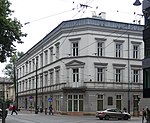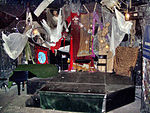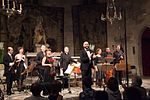The Jagiellonian University (Polish: Uniwersytet Jagielloński (UJ)) is a public research university in Kraków, Poland. Founded in 1364 by King Casimir III the Great, it is the oldest university in Poland and the 13th oldest university in continuous operation in the world. It is often regarded as Poland's most prestigious academic institution. The university has been viewed as a guardian of Polish culture, particularly for continuing operations during the partitions of Poland and the two World Wars, as well as a significant contributor to the intellectual heritage of Europe.The campus of the Jagiellonian University is centrally located within the city of Kraków. The university consists of thirteen main faculties, in addition to three faculties composing the Collegium Medicum. It employs roughly 4,000 academics and provides education to more than 35,000 students who study in 166 fields. The main language of instruction is Polish, although around 30 degrees are offered in English and some in German. The university library is among the largest of its kind and houses a number of medieval manuscripts, including the landmark De Revolutionibus by alumnus Nicolaus Copernicus.
In addition to Copernicus, the university's notable alumni include heads of state King John III Sobieski, Pope John Paul II, and Andrzej Duda, Polish prime ministers Beata Szydło and Józef Cyrankiewicz, renowned cultural figures Jan Kochanowski, Stanisław Lem, and Krzysztof Penderecki, and leading intellectuals and researchers such as Hugo Kołłątaj, Bronisław Malinowski, Carl Menger, Leo Sternbach, and Norman Davies. Four Nobel laureates have been affiliated with the university, all in literature: Ivo Andrić and Wisława Szymborska, who studied there, and Czesław Miłosz and Olga Tokarczuk, who taught there. Faculty and graduates of the university have been elected to the Polish Academy of Arts and Sciences, the Royal Society, the British Academy, the American Academy of Arts and Sciences, and other honorary societies.
The Jagiellonian University is consistently ranked among the top universities in the world. The CWTS Leiden Ranking, which reviews the scientific performance of more than 1,200 global universities, has placed the university at #1 in Poland, #74 regionally, and #250 globally.









